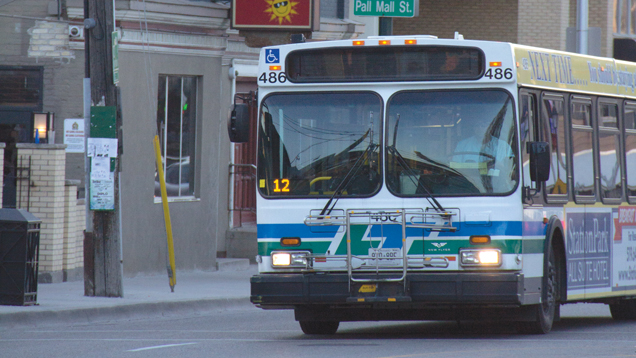New rapid transit bus for London
 CREDIT: CANDIS BROSS
CREDIT: CANDIS BROSSNew rapid transit systems are planned to be completed by the summer of 2016.
London is working towards building a rapid transportation within the next decade at a cost of $380-million. The proposed system in London would feature two L-shaped corridors that could be bus, rail or both. London taxpayers would be on the hook for $100-million of the cost, while the rest of the monies would come from the provincial and federal governments.
“The study is in the process of determining the network routes and technology. As such, the costs are in the process of being developed as well as the implementation timing,” said Edward Soldo, P.Eng. and Director of Roads and Transportation for the City of London.
“The environmental assessment study is reviewing which options are the most appropriate for the system to meet existing and future demands. At this stage, no technology has been selected,” confirmed Soldo.
One corridor would involve a north-end route from Masonville, heading south along Richmond Street past UWO, then heading east on Oxford Street to Fanshawe College; and the second corridor leaving south-end White Oaks, heading north along Richmond Street, then turning west along Oxford Street to Wonderland Road.
“One of the preferred routes would have a station at Fanshawe to provide service to the college,” Soldo said.
Soldo added with regards to funding, “implementation timing is still being developed, no work will commence until a funding partnership is developed with the provincial and federal levels of government.”
Liberal Leader Justin Trudeau came to London on Oct. 8 and agreed that this is something he would support for the city. London has longed to compete with other larger cities when it comes to rapid transportation. In addition, the predicted population of students wanting to live close to high-speed transit will keep the plan in motion.
Earlier in January 2015, this rapid transit plan made headlines in London when Mayor Matt Brown announced an Environmental Assessment plan called Shift. This is a public process that will provide citizens in the city an opportunity to have a say with the rapid transit network. Shift will influence how pedestrians, cyclists, cars and trucks move within the city.
The first stage of Shift begins this fall and the second part of the study is planned to be completed by the summer of 2016.
According to www.shiftlondon.ca, transit trips will be up to up to 50 per cent faster with rapid transit. Also, by 2030 there will be 25 per cent more cars on London roadways, so Rapid Transit can move residents with greater reliability and comfort and without out pollution elements.














